AbTeC RA RE-CAP: imagineNATIVE 20
by IIF
December 12, 2019
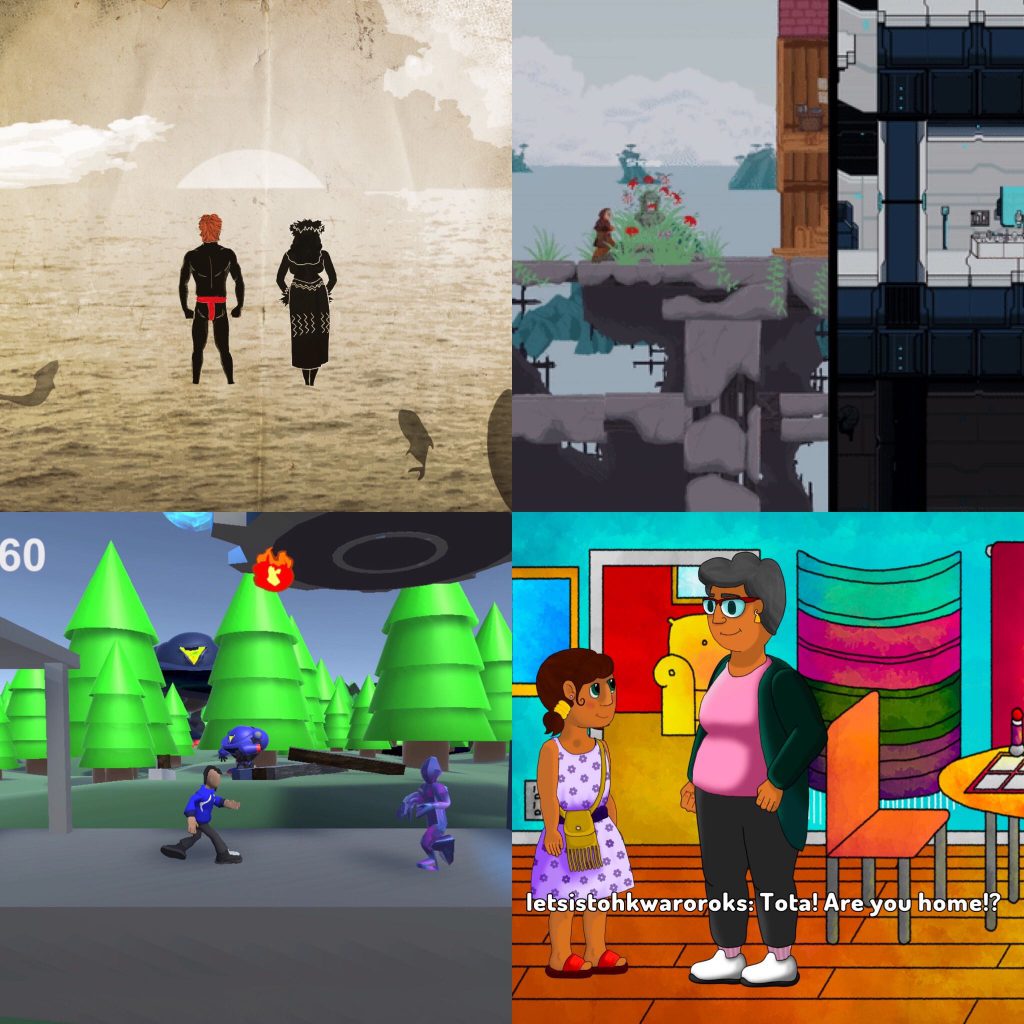
imagineNATIVE 20 Re-cap by Maize Longboat, Associate Director of Skins Workshops on Aboriginal Storytelling and Digital Media.
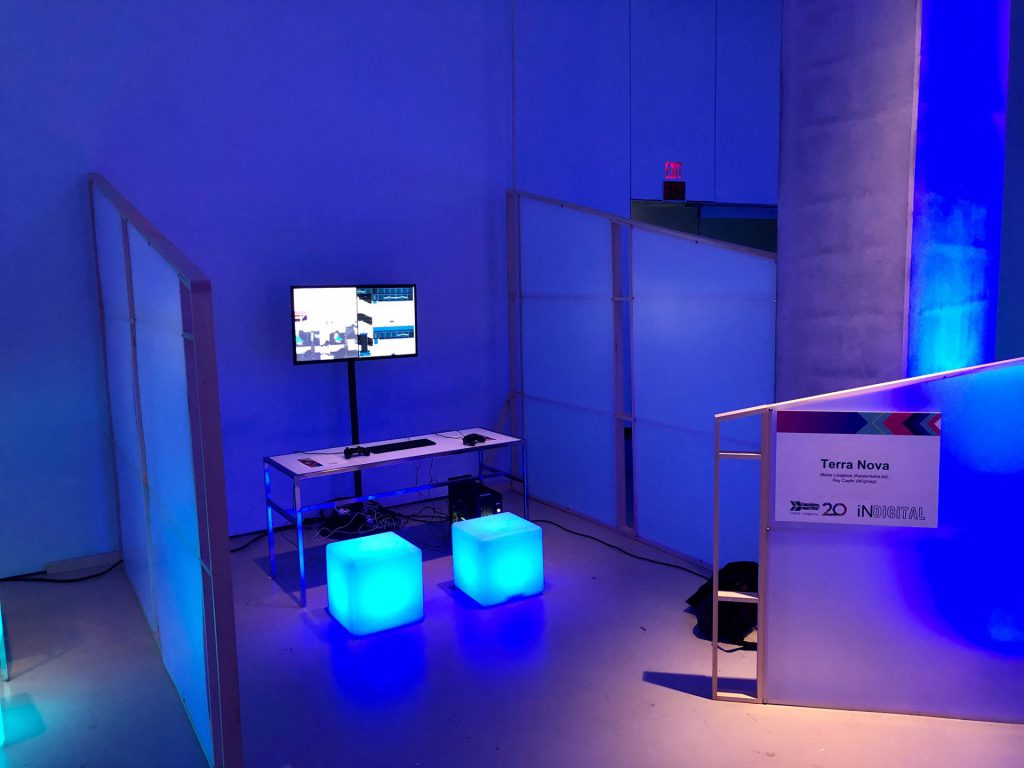
Late-October is a special time for Indigenous artists. imagineNATIVE is the world’s largest Indigenous film and digital media festival that honours the work of creative Natives from around the globe. This year, the festival celebrated its 20th anniversary and did so in style by revamping its digital media programming and the iNDigital Space. The iNDigital Space featured an impressive roster of video games, apps, audio works, 360-degree videos, and virtual reality experiences. I was honoured to show my first gameTerra Nova, alongside so many incredibly talented digital media makers in such a beautiful space.
Video Game Events
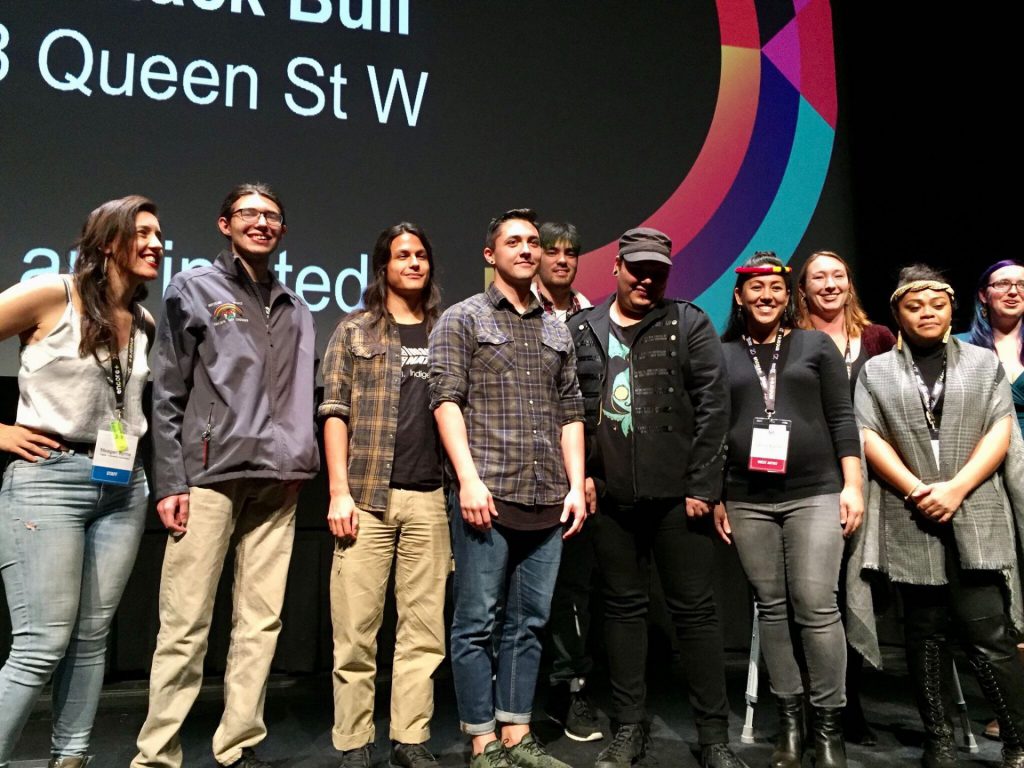
Several artist talks took place during the week and were moderated by Meagan Byrne imagineNATIVE’s Digital + Interactive Coordinator. I participated in the Video Game Artist Talk representing Terra Nova alongside the game’s Artist and Animator, Ray Caplin. The talk was a great opportunity to hear fellow game developers present their exciting work and to engage with an audience interested in the behind-the-scenes processes of game-making.
On Friday evening Meagan hosted‘Night of the Indigenous Devs;’ a live game-playing event that presented six games from the iNDigital Space onto the big screen. Both myself and Ray presented Terra Nova while keen volunteers played. The event offered a means for contextualizing and reflecting on the development process though dialogue with the audience. I really appreciated having the opportunity to share Terra Nova in a unique way that was just as dynamic and engaging for the audience as it was for the players.
Awards Ceremony

The festival wrapped up with an awards ceremony hosted by the hilarious Anishinaabe comedian and podcaster Ryan McMahon. To my surprise, Terra Nova was selected as the winner for the “Best Emerging Digital or Interactive Work” award among several impressive competitors! To top it all off, one of my idols, Anthony Makokis—who won this year’s season of The Amazing Race Canada with their partner James Makokis—presented the award! I have nothing but gratitude for everyone who supported the project throughout. I owe so much to the Terra Nova team, including Ray Caplin, Mehrdad Dehdashti, and Beatrix Moersch—without them the game would not have been possible to make. Niawen’kó:wa for this incredible honour!
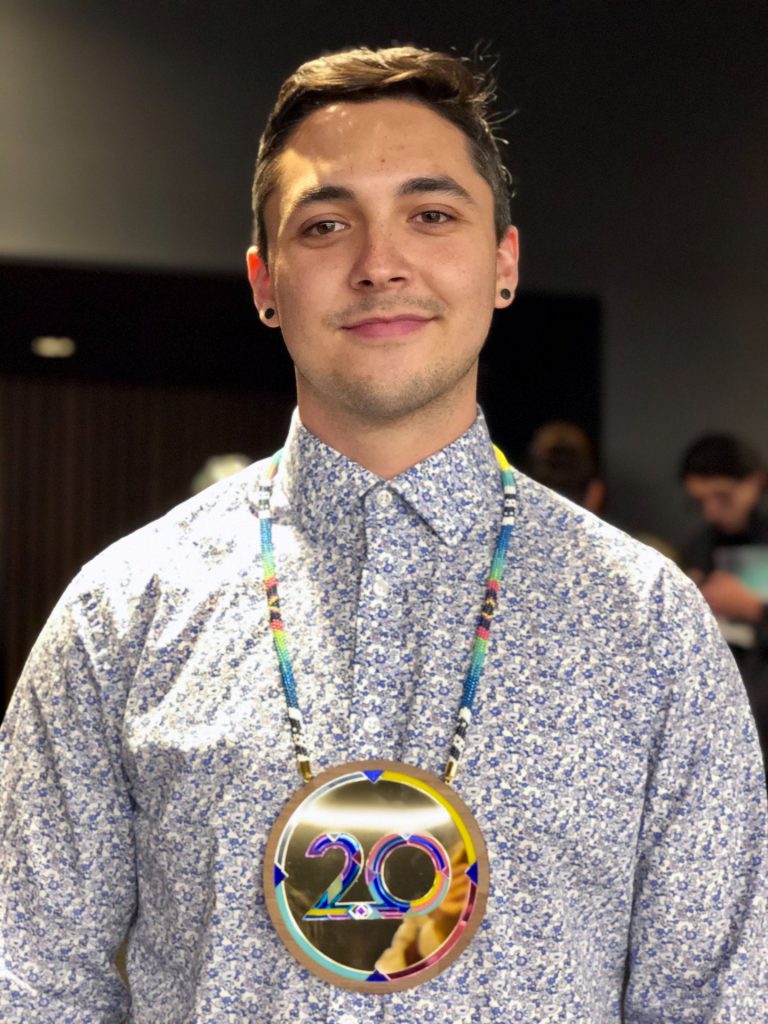
3D Printed Inspirations by Waylon Wilson, Research Assistant for AbTeC/IIF.
‘Gathering Across Moana’ curated by GLAM with Noor Bhangu at the 20th imagineNATIVE Film and Media Arts Festival, at 401 Richmond Street, Toronto, Ontario.

Each year the annual Indigenous film and media arts festival ImagineNATIVE hosts an art crawl where festival goers can visit a series of art exhibitions curated by Indigenous people. During this tour I came across The Sounds of Our Ancestors, 2018 by Kereama Taepa, this artwork really stood out to me as a media-maker engaging with new technology.
In this work a looping video projection shows a front-facing view of a bee flapping its wings. Electronic sounds of high pitched motors and beeps can be heard overhead. Hanging from the ceiling in front of the projector is a 3D printed object detailed with iconic depictions of Maori culture.
When I first approached The Sounds of Our Ancestors I thought the sounds I heard were coming from a common table-top scanner. Upon looking closer I realized the hanging object had been 3D printed, I began to recognize the audio to be the sound of a 3D printer. A 3D printer works by placing thin layers of plastic on top of each other, while the process occurs you can hear the buzzing of the tiny motors inside the machine. Taepa compares the buzzing of a 3D printer working in real-time, to the buzzing of bees.
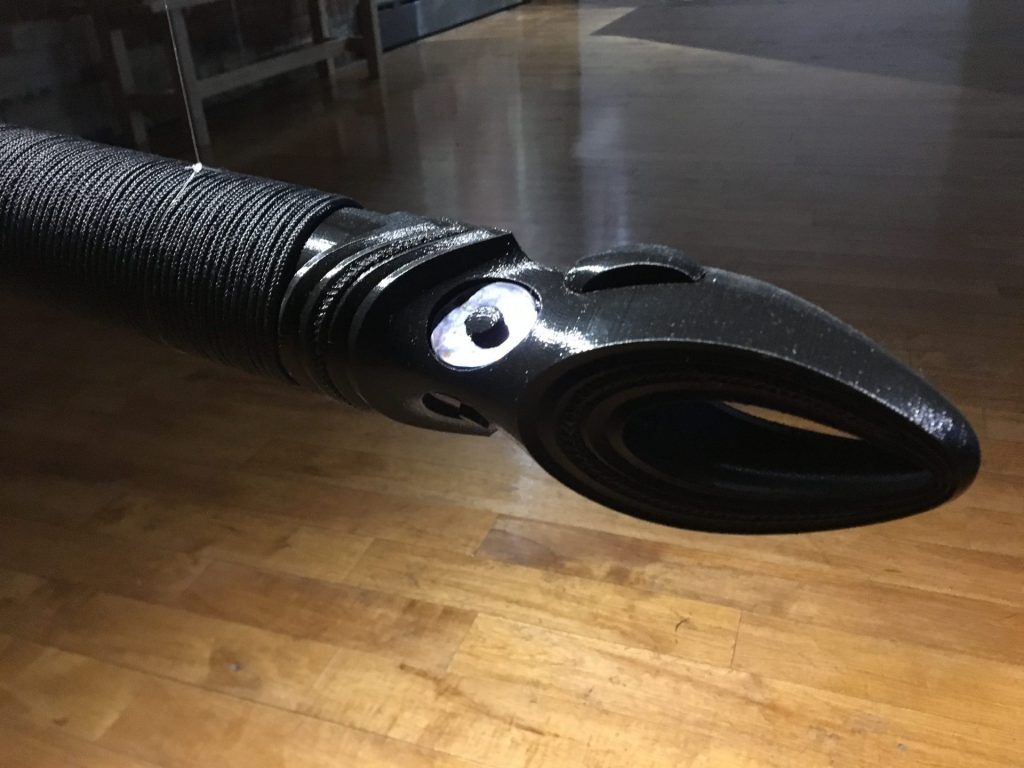
I am familiar with some of Taepa’s previous work with 3D printing. Taepa talks about 3D printing as being a constructive process in which layers of plastic are added together in order to create an object. He contrasts this to carving, which is a deconstructive process where materials are taken away. He compares the constructive process of 3D printing to the process of a bee building its hive, it does so by adding layers, upon layers of material together over time.
I think Taepa’s work is a great example of how Indigenous perspectives bring new ideas into the digital world. For anyone interested in new ways of thinking about digital fabrication and Indigenous technological influences I highly recommend this artist’s work.
imagineNATIVE 20 Re-cap by Ray Caplin, Research Assistant for AbTeC/IIF.
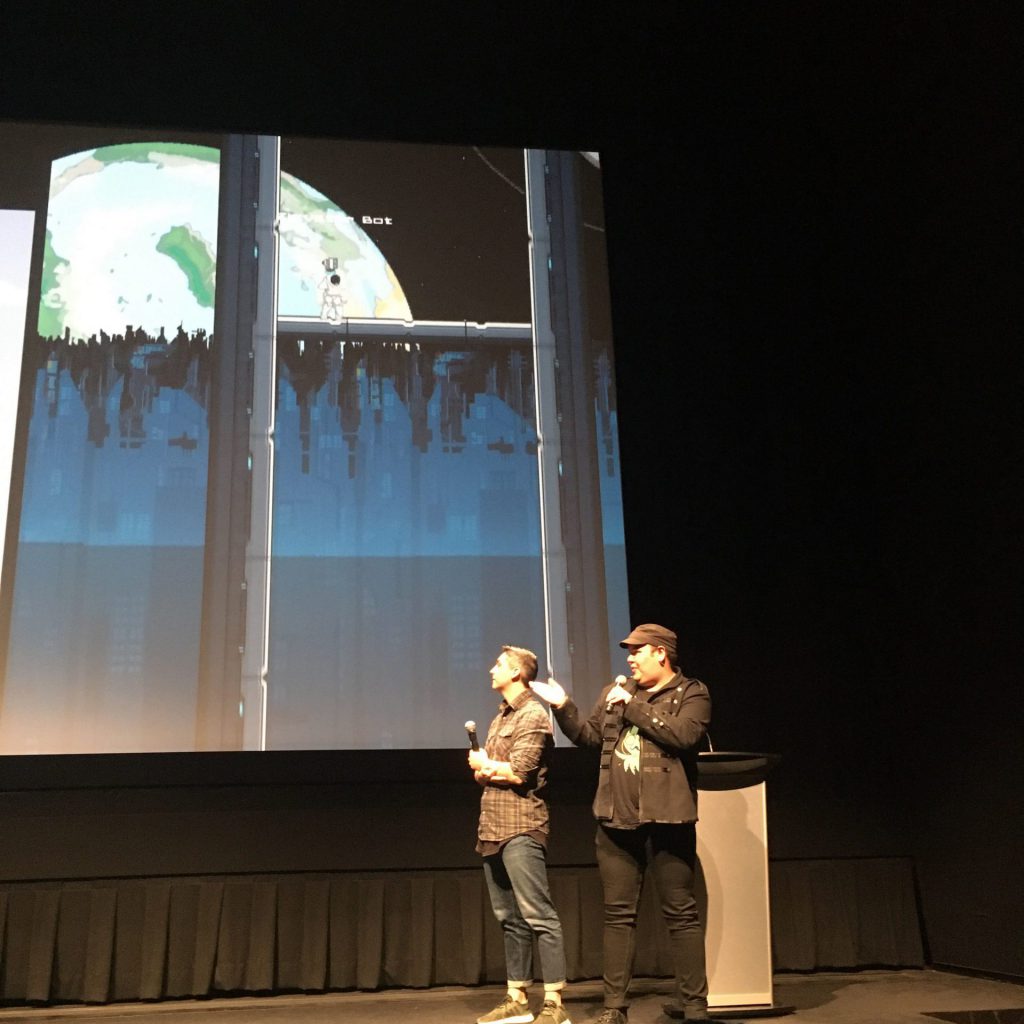
My experience at imagineNATIVE this year was mostly focused on video game and digital media workshops. I contributed to two video game projects which were featured inside of the iNDigital space. The iNDigital space was dedicated to showcasing video games created by Indigenous game developers. My work was featured in Wao Kanaka, and Terra Nova, I made art and animation for both games. I was very pleased to see both games in the iNDigal space, I feel each year this portion of imagineNATIVE is growing ever so slightly.
I also presented at ‘Night of Indigenous Devs’ which was an hour long panel and interactive discussion. Six Indigenous game developers presented their work on the big screen and volunteers from the audience played them. The response from the audience for Terra Nova was very positive and engaging. I found it very interesting to see how much emerging game related media was presented at this primarily film based festival.
imagineNATIVE 20 Re-cap by Kahentawaks Tiewishaw, Research Assistant for AbTeC/IIF.

ImagineNATIVE was particularly awesome this year because it was my first time attending as a Guest Artist! Being able to be there as both a Research Assistant, and an independent creator was a remarkable experience. Not only could I take pride in the work I had done on Karihonniennihtshera, I was also able to bask in the fact that I was one of many AbTeC/IIF members who had work showing at the festival! You hear little bits about what everyone is working on all the time, so it was pretty amazing to see the end results as a part of the same exhibition. That was probably the best part of the festival for me. I can’t wait to see what we all do moving forward!
imagineNATIVE Festival 2019 by Anastasia Erickson, Research Coordinator for AbTeC/IIF.
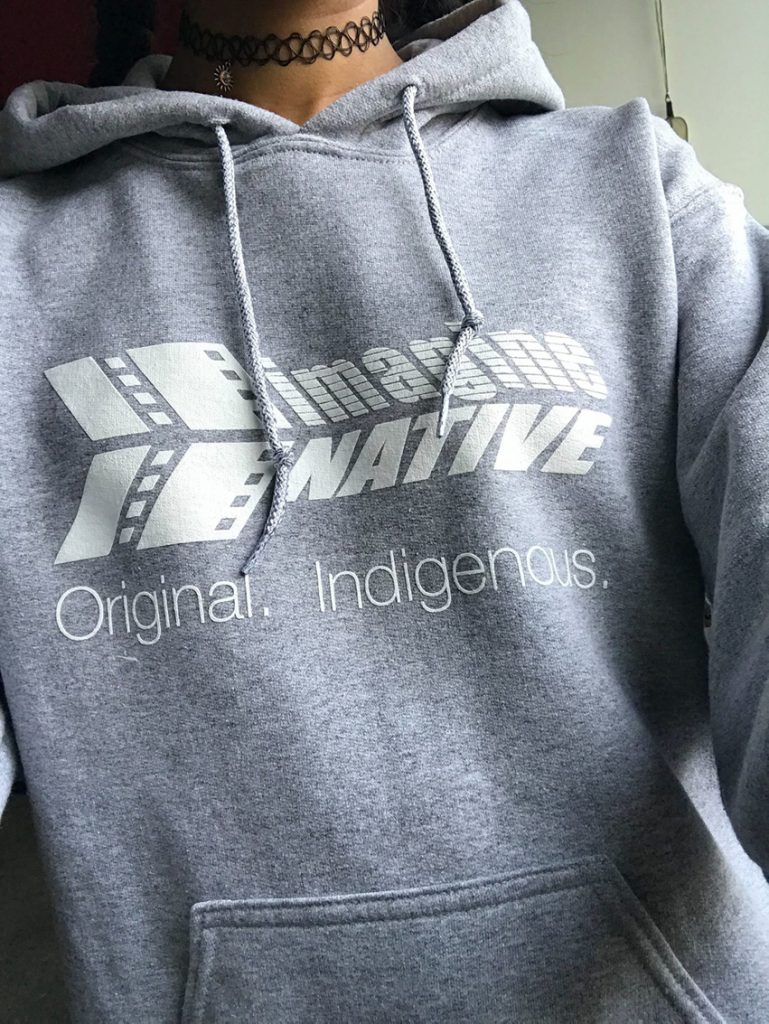
For one week each autumn, the TIFF Lightbox transforms into a space that welcomes filmmakers, digital media creators, and media enthusiasts for the imagineNATIVE Film + Media Arts Festival. This October, I was lucky enough to attend for the first time.
While the entire week was a whirlwind of fantastic art, fruitful new connections, inclusivity, and learning, what stood out to me the most was the feeling I had during and after the screening of one film in particular, Vai. Truly a tour de force, Vai is a feature-length film directed by eight different women from various Pacific cultures, following the life of one woman from early childhood through her life and into her elder years. Beautifully shot, the film was well-paced and engaging, and the use of eight distinct actresses in the portrayal of one character allowed for the audience to envision themselves in the narrative.
I watched this in the company of two female friends, and we each were in tears by the time the end credits began. It was a moving, empowering piece of art, and it made us feel proud to be strong women; yet, while it was a treasure to experience, it was simultaneously painful to process. I do not identify as being Indigenous to anywhere, as a biracial and diasporic Black American. My own heritage has been lost for a number of reasons, but most especially due to colonial violence and neglect; to be able to reflect on this melancholy during and after Vai was precious and important to me. There has always been a yearning to connect to the root of my root, to understand the cultures which my ancestors participated in and contributed to. Thus it was such a tender and bittersweet thing to bear witness to the passing down of long-held traditions through generations of Pacific women. Scenes of coming of age ceremonies and of communal customs are powerful images of resilience and kinship!
Though I may not have the same access to my roots as Vai’s filmmakers, it was still magical to be surrounded by a welcoming and diverse Indigenous community at the festival.
Underneath the Danglers by Alaina Perez, Research Assistant for AbTeC/IIF.
The imagineNATIVE Film + Digital Arts Festival celebrated its 20th anniversary this year in Toronto, Ontario. This was my first time attending and I was struck by the volume of festival programming that was organized. One of the events I was most looking forward to was the art crawl. I was eager to familiarize myself with the various installations exhibited in the 401 Richmond Building.
One exhibition I was particularly interested in was curated by DAPHNE, members including Skawennati, Hannah Claus, Nadia Myre and Caroline Monnet, all incredible Indigenous women artists I admire. DAPHNE curated ‘Constructive Interference’ an exhibition by Wendat artist Ludovic Boney. Having only seen the promotional image included in the event details, I was curious to see what other artwork would be accompanying the polychromatic danglers that were so pleasantly suspended from the ceiling.
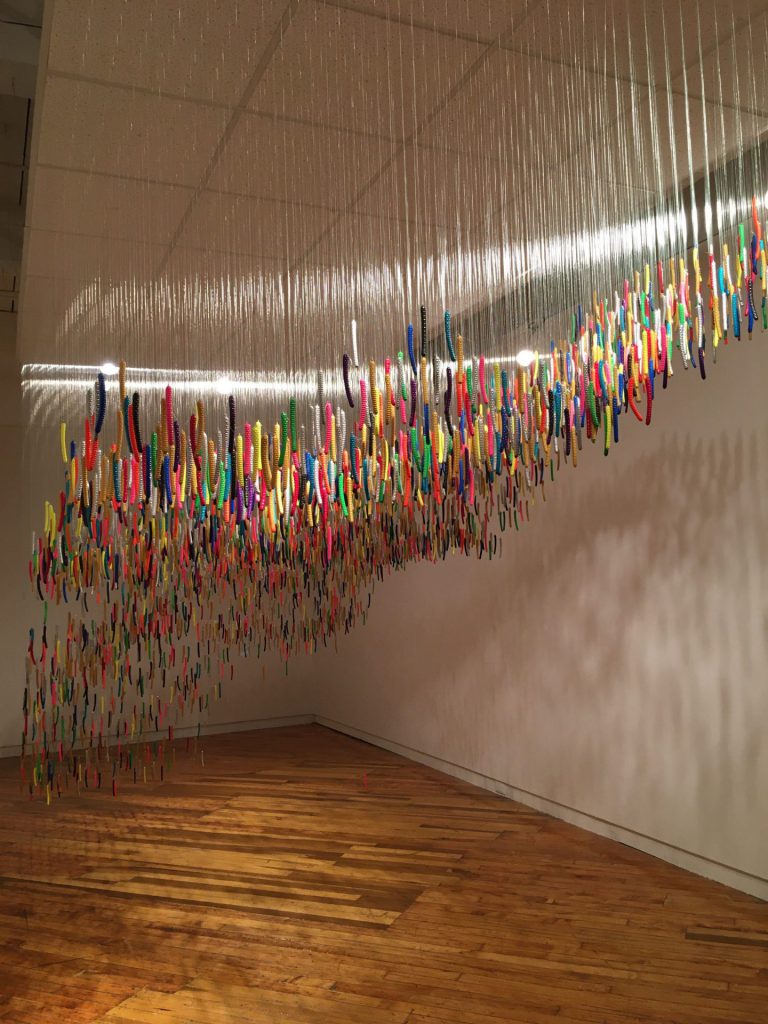
When I popped into the DAPHNE exhibit I was quite taken with Ludovic Boney’s Why So Many Ties? The presentation of the piece was straightforward, hundreds of metal sticks protruding from a wooden platform—each with a segment of a plastic shopping bag attached to it like a small flag. The wooden platform was destabilized making walking a bit precarious. The precarity of each step became even more exaggerated by the cacophony of creaks composed by Yannik Plamondon and Benoit Fortier which amplified every foot-forward by what seemed like 100 decibels.
I was anxious about my giant bag thwacking the sticks as I passed along the pathway. I was worried that I would damage the artwork, I was also a bit fixed on the very slight possibility of a stick hitting me in the face, (I am a humble 5’3.5, putting the sticks in a perfect eye-poking position). I loved how uncomfortable I was. I find visceral and affectual exhibition experiences to be a captivating strategy for engaging the viewer. I really enjoyed the uniqueness of this installation and after walking through the pathway I realized that the motion of my body left a reverberating effect on the sticks, they continued to sway long after my body passed. When looking at the swaying of the sticks I realized that their construction was intended to evoke the motion of bulrushes or similar brush.
When I revisited the exhibit during the art crawl artist Ludovik Boney was present and he discussed the installation. Hannah Claus asked about his choice of materials, particularly the bags, he responded in a completely unexpected way. I was expecting some sort of talk of environmentalism or something of a similar dimension. He explained that over the years every time he visits his mother she gives him food or some other item mothers give their children, and every time she does so she puts it in a plastic bag and double knots it. When Boney goes to open this gift from his mother he has to violently tear it open because the knots have been tied too tight. After many years of this he has ended up with a large collection of unusable plastic bags. He wasn’t sure what to do with them so he found a way to incorporate them into his art practice. I thought this was hilarious, seeing the extent of this collection of completely useless bags, I could feel the frustration of being in such a predicament. One would eventually have to adapt and learn how to use these collected ephemera in order to avoid their inconvenience. It was sweet to think about how Boney doesn’t want to tell his mother to change, choosing rather to adapt himself to her idiosyncrasies. It was charming to know that each of these sticks have manifested from a place of love and total frustration—a common phenomenon in many parent-child relationships.